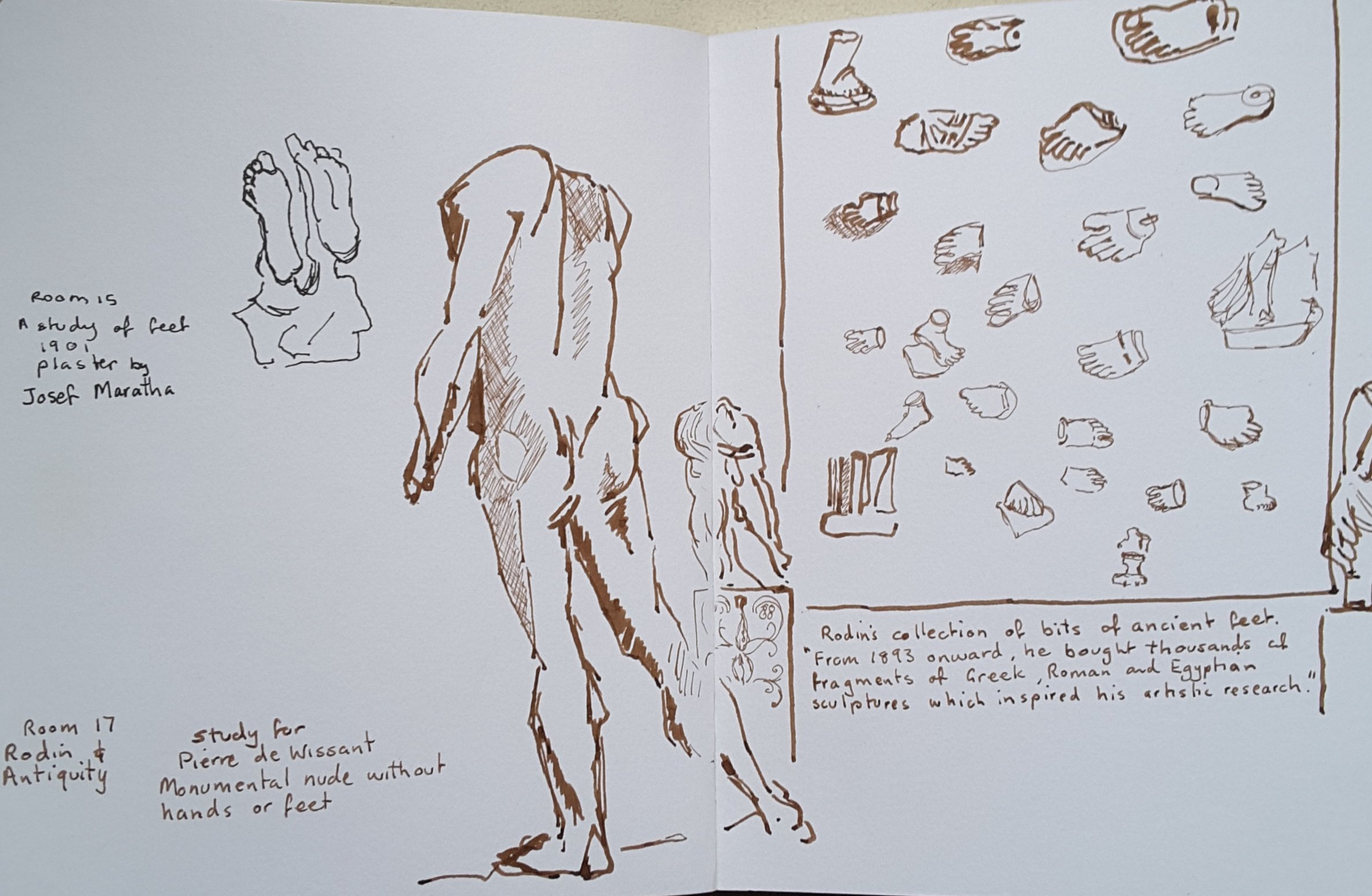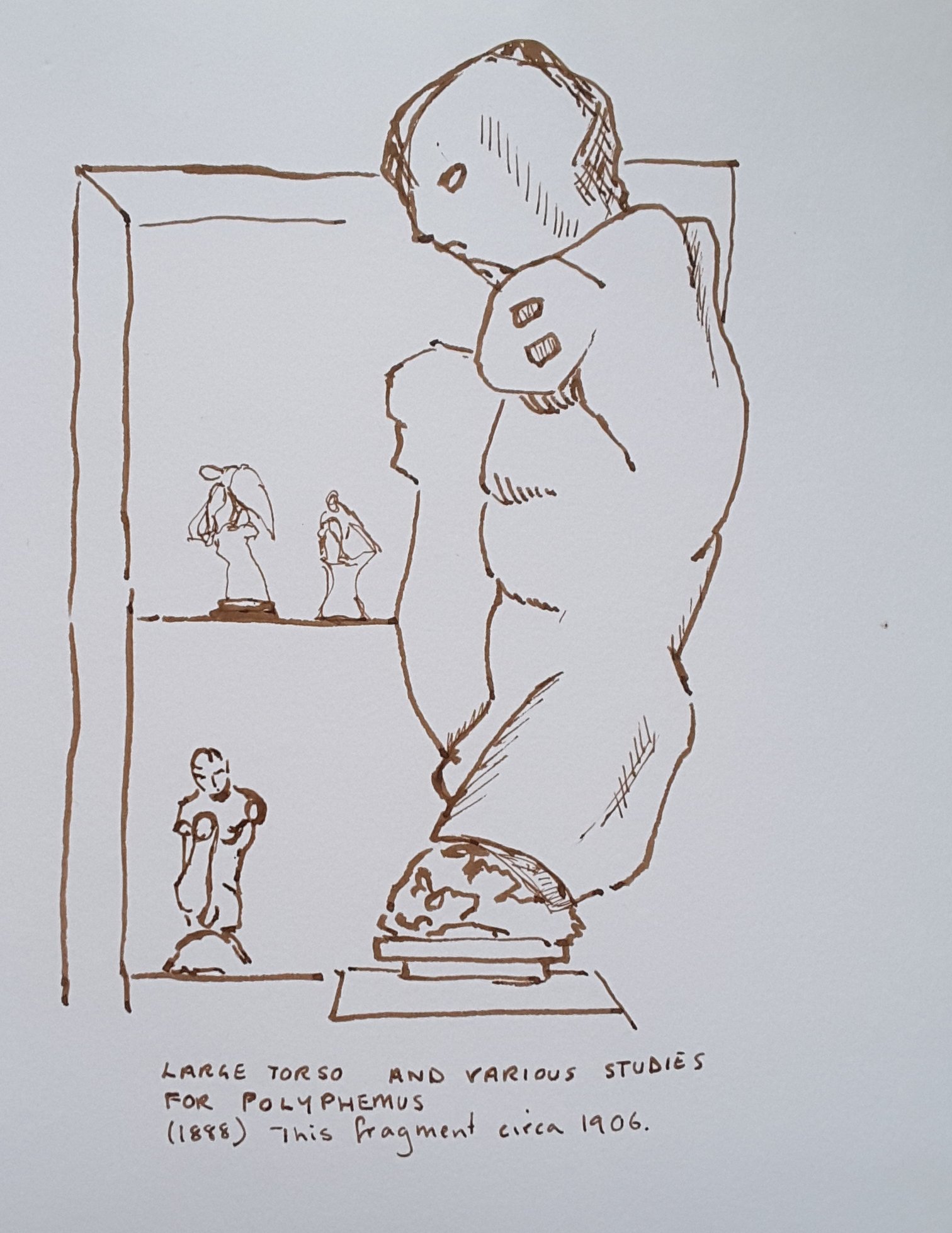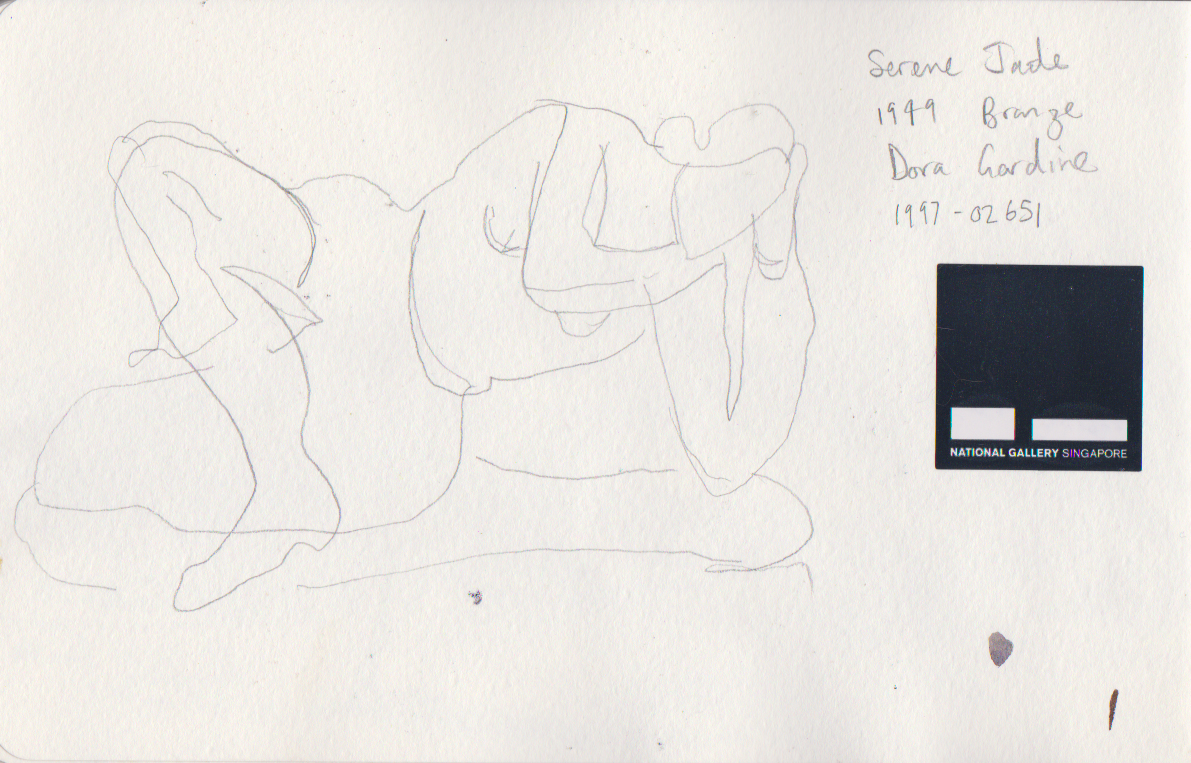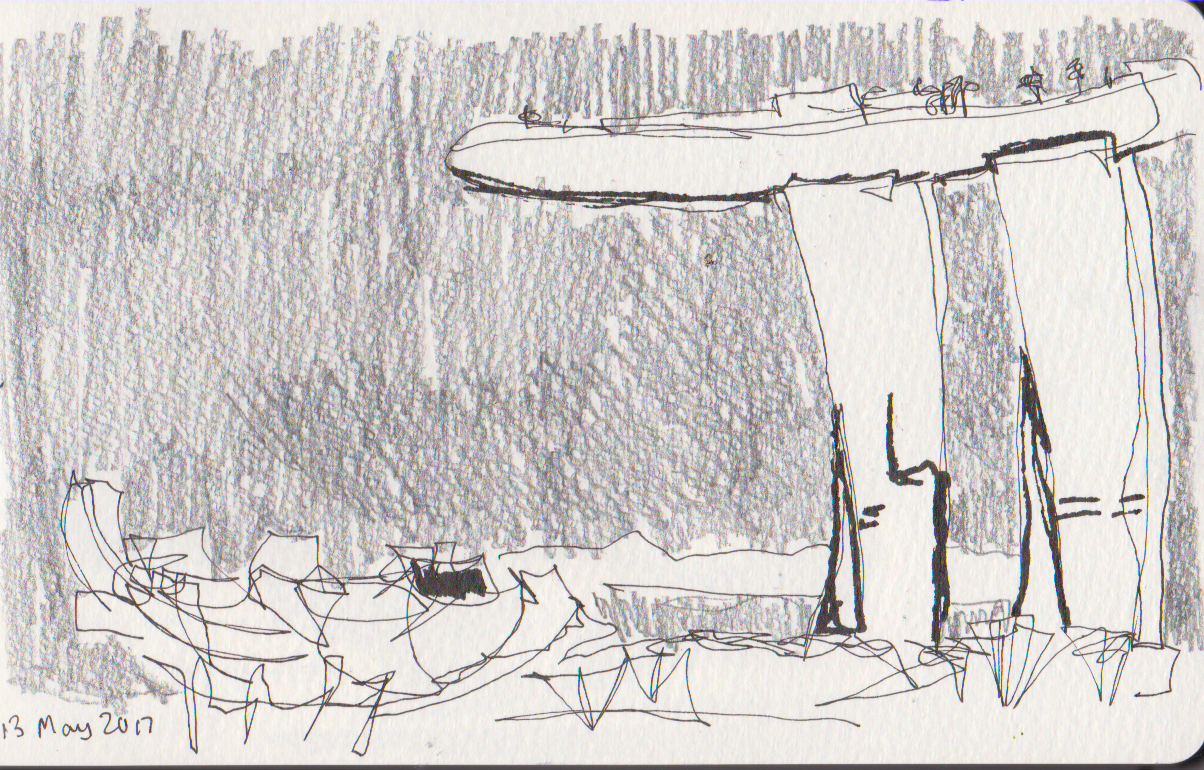Bodies of Art: Human form from the national collection, is currently on display in the downstairs sculpture rooms of the National Gallery of Australia. I spent the morning there quietly sketching away. The exhibition is a stimulating mix of sculpture, paintings, photography and video works which provided me with lots of interesting compositions to work on.
My first sketch was a grouping of stone sculptures, Torso, 1948 by Rosemary Madigan and Number 24, Harry Boyd by Robert Klippel and a third piece, an Anthropomorphic monument [gowe nio niha], (19th century or earlier) from the island of Nias in Indonesia. I was instantly drawn to the sandstone used in the two Australian works. The deep gougemarks on the Klippel sculpture acted like lines drawn across the surface. In contrast the smoother texture of Madigan’s work supported the subtlety of her torso’s carved planes.

Left to Right, Torso; Anthropomorphic Figure; Number 24, Harry Boyd, graphite with added watercolour
Behind me was an interesting juxtaposition of a hanging work by Giulio Paolini, Aria (Air), 1983 and beyond that, Triptych, 1970, by Francis Bacon.
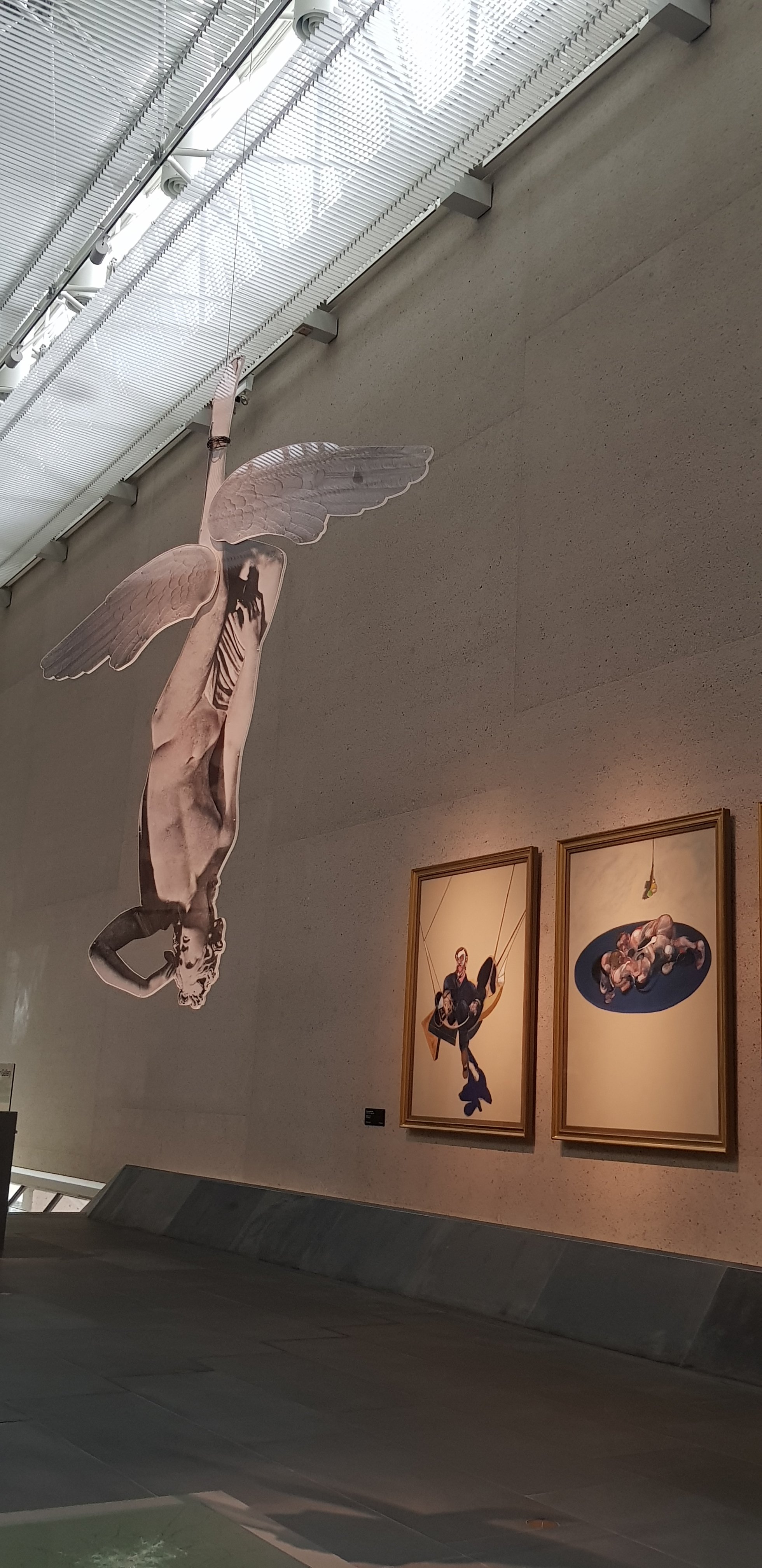
Paolini’s work consists of two photographs of a renaissance sculpture sandwiched between perspex and hang from a steel cable. The work slowly gyrates beneath the high gallery ceiling, while underneath lies a piece of shattered glass. Behind it hangs Bacon’s equally fractured figures, curiously feeling much more grounded and solid than Paolini’s figure does.

Giulio Paolini, Aria (Air), 1983 and Francis Bacon, Triptych, 1970, pencil with added watercolour
While I drawing the partial elements of the Bacon triptych into this sketch, I became quite intrigued by the figures in the work’s central panel. After a restorative cup of coffee and some biscuits in the Member’s Lounge I returned to my final sketch of the day, the detail of the central panel.

There is certainly scope for more drawing here, so I will plan to make it back there soon.
All the sketching was done in the gallery and the watercolour was added afterwards.






